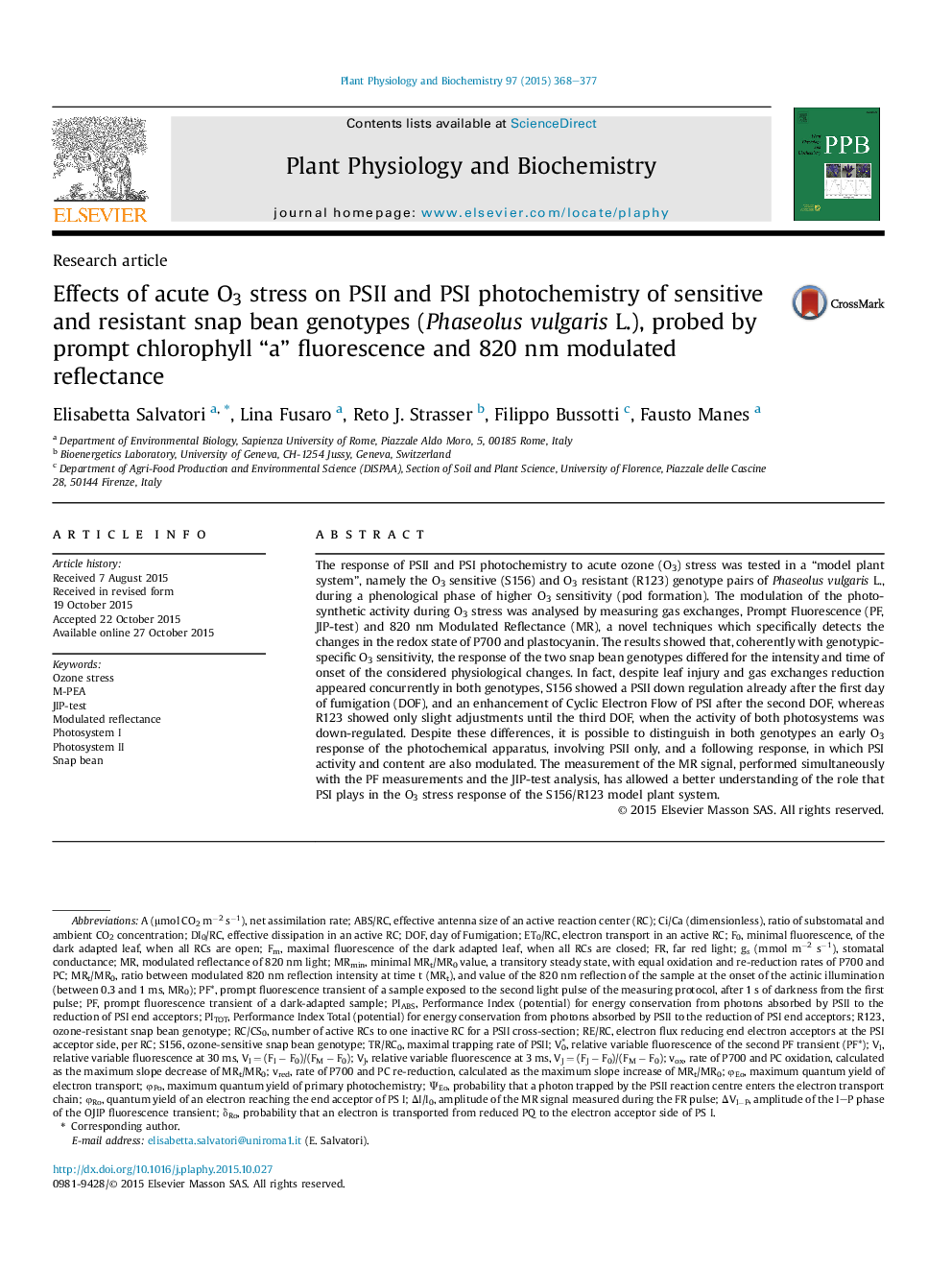| Article ID | Journal | Published Year | Pages | File Type |
|---|---|---|---|---|
| 8354550 | Plant Physiology and Biochemistry | 2015 | 10 Pages |
Abstract
The response of PSII and PSI photochemistry to acute ozone (O3) stress was tested in a “model plant system”, namely the O3 sensitive (S156) and O3 resistant (R123) genotype pairs of Phaseolus vulgaris L., during a phenological phase of higher O3 sensitivity (pod formation). The modulation of the photosynthetic activity during O3 stress was analysed by measuring gas exchanges, Prompt Fluorescence (PF, JIP-test) and 820Â nm Modulated Reflectance (MR), a novel techniques which specifically detects the changes in the redox state of P700 and plastocyanin. The results showed that, coherently with genotypic-specific O3 sensitivity, the response of the two snap bean genotypes differed for the intensity and time of onset of the considered physiological changes. In fact, despite leaf injury and gas exchanges reduction appeared concurrently in both genotypes, S156 showed a PSII down regulation already after the first day of fumigation (DOF), and an enhancement of Cyclic Electron Flow of PSI after the second DOF, whereas R123 showed only slight adjustments until the third DOF, when the activity of both photosystems was down-regulated. Despite these differences, it is possible to distinguish in both genotypes an early O3 response of the photochemical apparatus, involving PSII only, and a following response, in which PSI activity and content are also modulated. The measurement of the MR signal, performed simultaneously with the PF measurements and the JIP-test analysis, has allowed a better understanding of the role that PSI plays in the O3 stress response of the S156/R123 model plant system.
Keywords
Related Topics
Life Sciences
Agricultural and Biological Sciences
Plant Science
Authors
Elisabetta Salvatori, Lina Fusaro, Reto J. Strasser, Filippo Bussotti, Fausto Manes,
